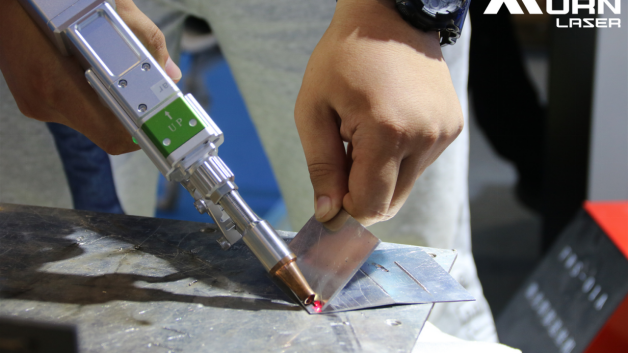-
Product
-
Fiber laser cutting machine
-
Profile Steel/ H-Beam Laser Cutter
high efficiency | high-performance | high quality -
Full Cover Fiber Laser Cutting Machine
supreme configuration | high precision | safe & pollution-free -
Sheet fiber laser cutting machine
tailor-made machine | efficiency boost -
Fiber Laser Bevel Cutting Machine
one-shot bevel | efficiency boost | streamlined process -
High precision fiber laser cutting machine
High precision | small footprint | fully enclosed -
Four-chuck Tube Cutting Lasers
truly zero-tailing | low cost per part | auto loader -
Three-chuck Tube Laser Cutting Machine
top production output | low cost per part | extremely short tailing -
Two-chuck Tube Laser Cutting Machine
top production output | low cost per part | extremely short tailing -
Full Enclosed Fiber Laser Cutting Machine
Integrated design saves installation time and shipping costs. - flexible processing | continuous cutting | efficient production
-
Fully Automatic Loading & Unloading Laser Cutting Production Line
intelligent production | optimizing factory space | reduce labor costs -
Sheet and Tube Fiber Laser Cutting Machine
supreme cost-effectiveness | dual-use laser | space-saving
-
-
Fiber laser welding machine
-
Air-cooled Portable Laser Welding Machine
more flexibility | easy to use | cost effective -
Automatic laser welding machine
fine welding seam | boosted efficiency -
Integrated fiber laser welding machine
instant welding | easy to operate & move -
Handheld fiber laser welding machine
long distance welding | multi-welding modes
-
- Fiber laser cleaning machine
- Bending Machine
-
Fiber laser cutting machine
- Solutions
- Why Morn Laser
- Price
- Contact
- VR
Menu
X- home
-
Product >
-
Handheld Laser Welding vs. TIG/MIG: A Real-World Comparison
2025-05-28For decades, TIG and MIG welding have been the go-to methods in metalworking. But in recent years, a new player has entered the scene: handheld laser welding machine.
Once considered futuristic, laser welding is now widely used across industries, from stainless steel fabrication to auto parts repair and even fine metalwork. But how does it really compare to traditional TIG and MIG welding?
This article provides clear, real-world comparisons to help you understand the benefits of laser welding.
1. Operation and Learning Curve
TIG/MIG Welding:
Requires professional training to master
TIG demands steady hand control, filler rod coordination
MIG is easier than TIG, but still needs setup expertise
Handheld Laser Welding:
Plug-and-play interface with intuitive controls
Minimal training required (learn in 1–2 days)
Automatic wire feeder optional but easy to manage
Verdict: Laser welding is easier for beginners and faster to train new staff.
2. Welding Speed and Efficiency
TIG/MIG:
Slower welding speed
Frequent stop-starts to clean or refill consumables
Often requires post-weld cleanup (grinding, polishing)
Laser Welding:
Up to 4x faster than TIG welding
Continuous welding with minimal downtime
Clean, spatter-free seams = no post-processing needed
Verdict: Laser welding offers higher productivity and reduces labor time significantly.
3. Weld Appearance and Quality
TIG/MIG:
Prone to oxidation and discoloration
Risk of burn-through on thin metals
May require polishing for cosmetic products
Laser Welding:
Smooth, narrow seams with little to no discoloration
Excellent for thin stainless steel and carbon steel
Ideal for visible parts: kitchenware, elevators, etc.
Verdict: Laser welding delivers cleaner, more attractive joints, suitable for high-end or exposed applications.

4. Material Versatility
TIG/MIG:
Handles most common metals but struggles with reflectives (e.g. aluminum)
Risk of warping thin sheets
Requires different wires and gases per material
Laser Welding:
Works with stainless steel, carbon steel, aluminum, copper, titanium
Welding thin metal sheet with precision
Fewer consumables = easier to switch materials
Verdict: Laser is more versatile and flexible, especially for mixed-material jobs.
5. Safety and Work Environment
TIG/MIG:
Produces smoke, arc light, and splatter
Requires protective gear and good ventilation
Noise and heat levels can be high
Laser Welding:
Clean and silent operation
Very low spatter and fume emissions
Verdict: Laser creates a cleaner, safer workspace and helps meet modern environmental standards.
6. Maintenance and Downtime
TIG/MIG:
Requires frequent nozzle cleaning, wire replacement
Electrode wear can cause quality issues
Maintenance often interrupts workflow
Laser Welding:
Fewer moving parts
Long-lasting laser sources (20,000+ hours)
Verdict: Laser machines offer lower maintenance and more uptime.
If you're running a fabrication shop, repair center, or small-scale metal workshop, metal laser welder offers a modern, efficient, and versatile solution that can help you:
Cut production time
Reduce post-processing
Improve weld quality
Solve skilled labor shortages
Ready to Upgrade Your Welding Technology? Morn Laser offers a wide variety of handheld fiber laser welding machines for you to choose from!
- Office Address:
- 17F, Building 5, Qisheng Mansion High-Tech Zone, Jinan, Shandong 250101, China
- Email: info@mornlaser.com
- Mobile/WhatsApp/WeChat: +86 151 6916 6350
CONTACT USCopyright © 2008-2022 Morn Laser All Rights Reserved.![]() Get a Quote
Get a Quote
![]() Get a Quote
Get a Quote
Cookies
We use cookies to improve our services and remember your choice for future visits. By clicking "Accept cookies", you consent to the use of cookies on this website.
Read our Privacy Policy
Get a Quote x
![]()








